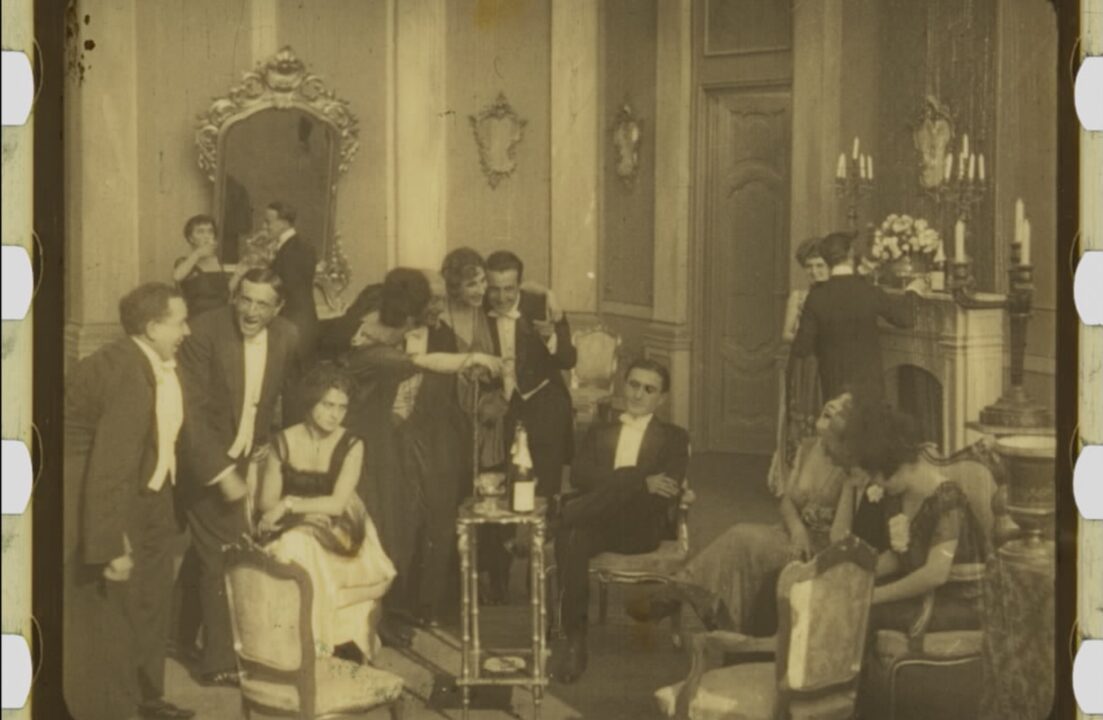Italy (Brussels Morning) The film is called “Capelli Biondi” and there will be the world premiere presentation in Bologna, on the occasion of the thirty-seventh edition of the international festival “Il Cinema Ritrovato”. What’s behind the restoration of a film, the work of the team made in Messina and the story of the two films “returned” to the Italians?
Since April they have been dissecting, studying, and restoring old films, returning to the citizens cinematographic masterpieces of Italian silent cinema from the early twentieth century, 80% of which have been lost.
The guys from the Cineteca dello Stretto
A team entirely made in Messina born about a year ago and who has recently been busy refurbishing (as far as possible) a 1919 feature film entitled “Capelli Biondi” which they had lost the tracks and which will be presented as a world premiere, at the Lùmiere cinema in Bologna on the occasion of the thirty-seventh edition of the international festival “Il Cinema Ritrovato”, which has been taking place in the city of the two towers since 24 June.
The film was screened with the piano accompaniment of Daniele Furlati, preceded by an introduction by Maurilio Forestieri, head of Cineteca dello Stretto, and Andrea Meneghelli, head of the film archive of the Cineteca di Bologna, who assisted in the restoration offering the spaces of the “Immagine Ritrovata” laboratory.
«This discovery is exceptional – explain the guys from the Cineteca dello Stretto – It is estimated that around 80% of the film production of the Italian silent period has been lost. The discovery and recovery of this film adds a small piece of the history of our country’s cinema and highlights the importance of film preservation, an increasingly urgent topic with today’s massive use of digital.”
«Our work was born from the foresight of an entrepreneur, who found hundreds of films in the area of the Hotel Lanterne Magiche – explains Maurilio Forestieri – Many would have thrown away the material found, but he instead decided to investigate further with studies, and today, between the films analyzed, we have two of particular importance: the first, “The Eye of Shivah”, with which we participated in the fortieth edition of the Turin Film Festival with the Turin Cinema Museum, and the second is precise “Blonde Hair” ».
«We have dissected about three hundred films, which means that we are at a quarter of the total. This is why there is still a lot of work to do – continues Forestieri – In Ortigia we want to create a place of conservation and restoration. This entrepreneur provided us with a space adjacent to the hotel and the aim is to create a commission between the museum and the archive.” The team, made up entirely of Messina residents, operates between Messina and Ortigia, where in particular Maurilio Forestieri works together with Isabella La Fauci and Angelo Scuderi. Furthermore, Forestieri is also the contact person for the municipal films found a few years ago in a warehouse at the Zir and not properly preserved, then moved manually to a room at the Palacultura (here’s the story). The main objectives are the recovery, conservation, and enhancement of audiovisual heritage.
But why is “Blonde Hair” so important?
«It was a complicated restoration – explains Forestieri – The 57-minute feature film (therefore a “serious” work created to be distributed in cinemas) dates back to 1919 and is in support of cellulose nitrate, the first material used for the manufacture of cinematographic films. This is highly flammable and, if stored in environments with temperatures that are too high, it also risks spontaneous combustion.
The film is made up of four “pizzas”, of which two have remained in good condition, but the other two have not, as they were not properly preserved: some parts have become glued. The first phase, therefore, was the chemical treatment of the film, to allow it to unfold: it spent two months inside a glass bell jar in a chemical solution to dissolve the glued parts. Unfortunately, some scenes were lost anyway, also because this type of degradation is unpredictable: there may be nothing left from one day to the next. However, we consider ourselves lucky.” Another important characteristic of “Capelli Biondi”, beyond the fact that it is the only surviving copy, is the fact that it was “colored” with the techniques of the time, marking the difference between external and internal spaces, and between lights on and turned off in the rooms.
After the particular treatment reserved for “Capelli Biondi”, with the simultaneous elimination of the parts that were too compromised, the classic restoration process began, the same used for “The Eye of Shivah”, a film which is only 15 minutes long but «with an interesting story», says Maurilio, as there were only the shots and the “instructions” for editing them, but the film had never been edited.
«When restoring a film, the first phase is to understand the state it is in – explains the manager of the Cineteca dello Strait – In the case of “The Eye of Shivah”, it was a 9.5 mm film, one of the first for home use from the 1920s, very thin. Its peculiarity is that it is found on a camera negative, that is, a film taken directly from the video camera with which the films were recorded in 1926.
The exceptional thing is that it had not been edited. The director, R. Gardenghi, about whom we know nothing, had only filmed and prepared the assembly on sheets of paper, without ever doing it. It was an atypical restoration job: the film was cleaned and repaired to restore its former flexibility. Then we edited it following the director’s instructions a hundred years later. Afterward, the film was digitized: now the restoration is done digitally, and the new film is no longer printed. Finally, with digital restoration, we try to restore the film’s sharpness, maintaining its patina. Finally, there is the “color correction” part.”
«It is thought that the same loss experienced for silent cinema will be experienced with digital films – comments Forestieri – Today we managed to recover these films because there were physical supports, which are missing in reproductions made on digital.
A case in point is floppy disks, which need adequate hardware, or VHS, video cassettes, whose fate is to become demagnetized. Digital gives the illusion of an eternity that it does not have, hence the importance of film libraries, which take care of films, videos, but also video games and other audiovisual materials”, concludes Maurilio, who together with the other kids of the Cineteca dello Strait also organizes educational activities in schools, such as the “Adventures in the film library” initiative proposed to an elementary school. Not only that, there are also workshops and exhibitions.
Follow the story of “Capelli Biondi”:
Italy, 1919.
The Costantini production company was born. It is a small company, which seems to have produced only one film, Capelli Biondi, after which it closed its doors.
Ortigia, 2022.
After more than a century, this feature film reemerges from the shadows, still shrouded in an aura of mystery. Four 35mm ‘pizzas’ made of cellulose nitrate, soaked and toned, were found in the eighteenth-century Palazzo Corpaci in Syracuse, home to the “Magic Lanterns” accommodation facility.
The little information found so far is contained in the precious volumes “The Italian Silent Cinema” by Vittorio Martinelli and Aldo Bernardini, who have not found any review of this film in the magazines of the time, which, it seems, was completely ignored by public and reviewers. The direction, as well as the actors, also remain unknown.
The subject is taken from the novel of the same name by Salvatore Farina, published in 1876.
Very active in the second half of the 19th century, Farina favored writing stories with a romantic and covertly passionate flavor, set in the nascent bourgeois class, and “Blond Hair” is no exception. It tells of an impossible love between a count and a young commoner, forced to sell her blonde braid to care for her sick mother. Between obstacles and betrayals, the story has a bitter epilogue. The real fulcrum of the story is the count’s boundless adoration for the lock of blond hair, bordering on fetishism.
The article was originally published in Italian for the online newspaper LetteraEmme.



